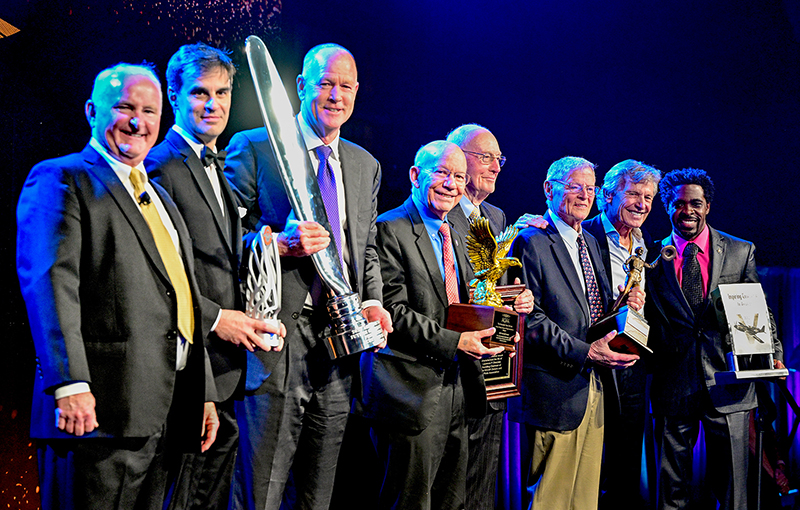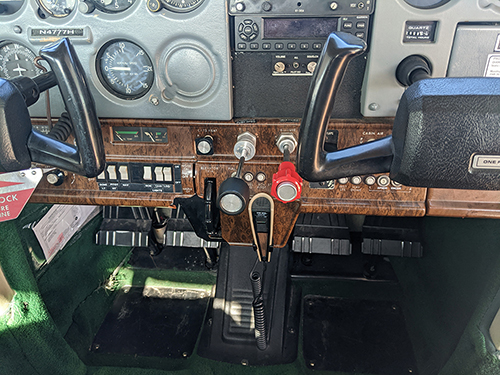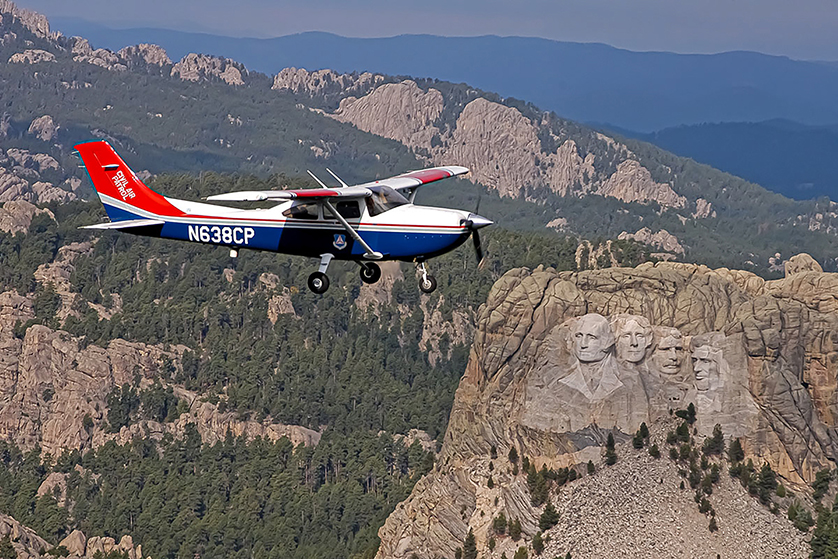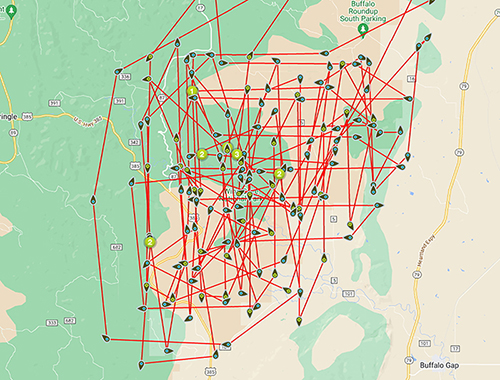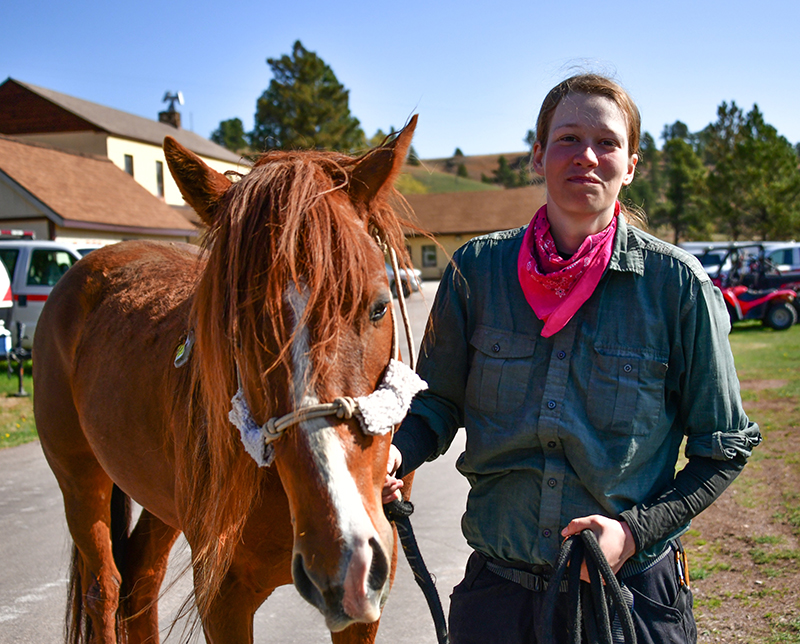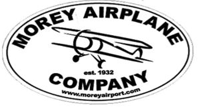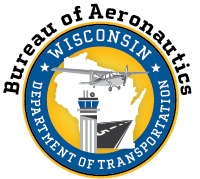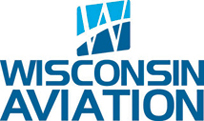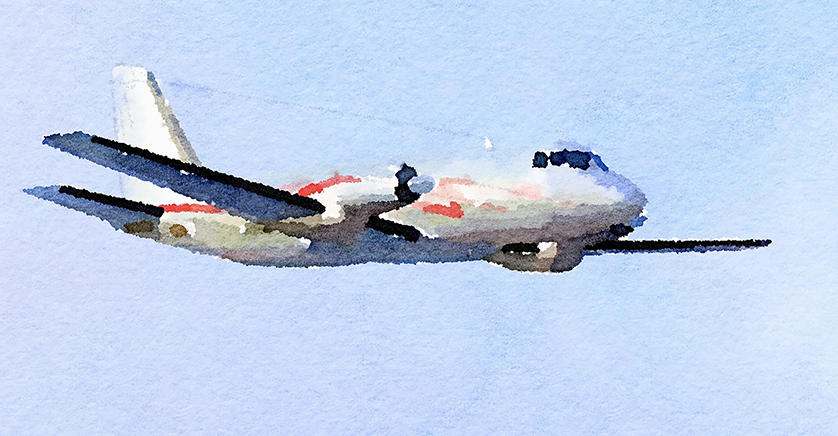
by Dean Zakos
© Dean Zakos. 2023 All Rights Reserved.
Published in Midwest Flyer Magazine June/July 2023 Digital Issue
I loved being in the air.
I was 26 years old, tall and gangly, in 1972. I was the newbie First Officer sitting in the right seat of a Grumman Gulfstream G-159. The aircraft was owned by a large consumer products company. Our day started early at our home base, Milwaukee’s Mitchell Field. Nine of our 14 seats were filled on this flight. Businessmen using the corporate airplane. We climbed out at about 1,900 feet per minute into scattered fair-weather cumulus and took in the expanse of a blue-green Lake Michigan as we turned on course to the south. The destination was Jackson, Mississippi (KJAN), where we would overnight. Then, on to El Paso, Texas (KELP). At the end of day two, back to Jackson, overnighting again. Returning to KMKE the following morning.
It was summertime. The 24- and 36-hour prog charts showed a low-pressure system developing over the southwestern United States. The leg from El Paso back to Jackson looked like it may be a challenge, with several lines of showers and thunderstorms, some severe, forecast to move across west, central, and east Texas along our line of flight.
I wanted to look sharp for the captain on this trip. I had flown with him a few times before. Occasionally, as the First Officer; more frequently, as the “relief” pilot to spell the captain or the FO on longer trip segments. On flights when I flew as the relief pilot, the captain would often refer to me as “ballast.”
I had about 30 hours in the G-159. I had a lot to learn. I knew it – and the captain knew it.
The captain’s name was O’Brien. Everyone called him “Obie.” He was a hard drinking, hard talking Irishman, with a penchant for fifths of Jameson, foul-smelling cigars, and randy limericks, of which he seemed to have a never-ending supply.
Regardless of his taste in jokes, I held him in high regard. Obie soloed in civilian life in the late 1930s and was well positioned for a flying slot in the Army Air Corps at the start of World War II. He flew B-25 Mitchells for the Fifth Air Force in the Southwest Pacific. I am told he became adept at low-level strafing of Japanese shipping and dropping parafrag bombs on jungle airfields. He earned a Distinguished Flying Cross and several Air Medals. If asked, he would say he was only doing his job – the same as everyone else. I was not so sure. Was just any pilot capable of leading and flying missions, often in rotten weather, and at mast height or treetop level, all while getting shot at?
Obie stayed with the flying game after the war, trying the airlines both in the United States and in South America. A few brief stints in Africa and the Middle East. He seemed to like to move around. His only constant companion was his old, worn-leather liquor case, which he made sure was carried on and off each flight. That was one of my primary responsibilities as FO. Obie had seen a great deal of the world out of a cockpit window, and all the weather the world could throw at him.
My logbook and career were a little thin at this point. I had some interest in airplanes growing up, but no passion. I did well in my high school classes; played some sports; chased some girls. In college, I studied electrical engineering, but excelled mostly at shooting pool, drinking beer, and staying out late. My grades suffered. I questioned my commitment. I heard about a ground school being offered for thirty dollars. Curious, I signed up, attended the classes, and passed the written test.
There was a small airport close by – one paved runway and one turf runway. I soloed at age 20 in a Piper J3 Cub in 1966 on Mother’s Day. Five dollars (wet) per hour for the airplane rental and five dollars per hour for the instructor. From the moment of that solo, I knew what I wanted to do with my life.
I next traveled to California to attend a flying school to pick up my commercial and instrument ratings. With 250 – 300 hours, the small commuter airlines would start to look at me. The flying business then is like it is now – there is an ebb and flow to it, and timing is everything. My timing was lousy, and I missed out on the airline jobs out there.
Instead, I found a job instructing in the Chicago area. While building time, I picked up my multi-engine rating in a Piper Apache. I remember clearly how little airspace there was to worry about at the time. No Chicago Class Bravo. No TFRs. The airspace restrictions we see today sort of creeped up on us over time. I am not complaining about the present system, but looking back, there was a freedom to take off and go that simply does not exist today.
In late 1968, I thought I was on the way to my airline career. I had an interview scheduled with Air Wisconsin in Appleton. Unfortunately, Uncle Sam had other plans for me. I enjoyed a deferment from the draft until my classification was changed to 1A that November. A letter inviting me to join the U.S. Army (well, actually, insisting) quickly followed. I trained as a mechanic on AH-1G Cobra attack helicopters.
I received orders in August 1969 to report to the Bien Hoa airbase in South Vietnam, with refueling stops in Alaska and Japan on the way over. I had a window seat on the arriving flight, and I still remember my disbelief, while looking down as we crossed the Vietnamese coastline, how a country with such beautiful blue ocean water, white sand beaches, and lush tropical greenery, could be in the midst of a real shooting war. The other first impression in-country was sticking my head out of the transport on landing and feeling like I was stepping into an oven. The heat was oppressive. I got used to it.
The guys who had been there awhile could always tell who was new. The experienced hands recognized which shells whistling constantly overhead were incoming or outgoing; I ducked for cover until I learned to figure it out. I was a Crew Chief in the First Cavalry Division, C battery, 2nd Battalion (the “Blue Max Battalion”), 20th Artillery Regiment. We were responsible for 12 Cobras. I was lucky; I returned to the States 13 months later.
After my discharge, I went back to flight instructing, this time in the Milwaukee area. In 1972, I learned of a part-time corporate flying job. Obie must have seen something in me during the interview. With cigar smoke billowing above his small desk and filling the mostly bare office, he peppered me relentlessly with questions. I would be flying single pilot in a Cessna Skymaster and flying some FO on the Gulfstream G-159. Obie was “old school.” I quickly learned that, as captain, he expected little of me. “Sit down, shut up, and don’t touch anything,” was pretty much the standard he established for right-seaters. There was no formal training on the Gulfstream. “Get in, and pay attention,” Obie gruffly told me.
In the mid-1950s, Grumman wanted to get into the post-World War II corporate aircraft market. They did not have an airplane to offer. Initially, the designers looked at converting the Grumman S-2 Tracker, a design sold to the Navy as a light, twin-engine transport for use on aircraft carriers. However, it was too small, had high-mounted wings, and relied on piston engines. Grumman knew the civilian market wanted a low-wing turboprop-powered aircraft with stand-up headroom. So, they got out a clean sheet of paper and designed a classic corporate aircraft. The G-159 was intended for a crew of two and a typical corporate layout of 10 to 14 passengers. A high-density layout could seat up to 24 passengers. There was a lavatory and a galley. The Gulfstream line was born.
For the G-159, designed to fly high and fast, Grumman chose the Rolls-Royce Dart Mk 529-8X or -8E turbine engines rated at 2,110 shp each, with four blade, constant speed, fully-feathering props. The Dart engines had been in use on British airliners and developed a great reputation for reliability. These engines were loud. Turboprop engines, generally, are often described as emitting a high-pitched whine. The Darts generated a high-pitched scream. The volume level and sound were both unique. If you were standing next to one when it was spooling up without hearing protection, it would make your ears bleed. The Darts gave the G-159 good power and a 302-kt cruise speed, were economical to operate, and had excellent range. Service ceiling was 33,600 feet.
One unusual feature of the engines was the “fuel trimmers,” which allowed us to fine-tune the amount of fuel going into the turbines. This was a particular advantage for altitude changes and hot starts. The fuel trimmers were located on the FO’s side of the center console. You could flick the switches up or down to add or decrease fuel, all the while keeping a close eye on turbine temps and RPMs. Using them correctly and getting the timing right was part art, part science.
The avionics in our panel, typical of the time, consisted of dual Collins nav/coms, dual Collins flight directors, dual horizontal situation indicators, a transponder, DME, and an ADF. We also had a two-axis autopilot and weather radar.
The G159 was 64 feet long, with a wingspan of 78.5 feet. MTOW was 35,100 lbs. The wings were straight and mounted low. It had a swept vertical stabilizer and straight horizontal stabilizers. It sat on retractable tricycle landing gear, with two wheels on the nose and two on each main. Also, and unusual for the time, the G-159 had an internal APU, which provided for ground power for air conditioning and other systems prior to engine start.
It was a good-looking airplane. I did not have many opportunities to log time in the G-159, but it was nice flying and real solid, as you would expect from Grumman, with no quirks or surprises.
Completing the leg to KJAN was uneventful. The next day, Obie let me take the leg into KELP. I knew I could fly the G-159, but there is a psychological hurdle moving from FO to handling the controls. On final to 26L, I was on speed and glidepath. The hot, mid-morning West Texas air was bumpy, but I did my best to maintain as smooth a ride as I could. Despite my nerves, I brushed the G-159 onto the runway like the professional I hoped to be. Obie did not say anything, but I thought he was pleased with my performance.
The business meeting in El Paso was going to run late into the day. We planned on a departure at 2130 local time. Obie and I spent the day in the pilots’ lounge at the FBO. Not a lot to do between breakfast, lunch, and dinner. We arranged with the caterer for some cheese and sausage trays and ham and turkey sandwiches for our passengers when they boarded the airplane, as they would not have the opportunity for dinner prior to returning to the airport.
I checked on the weather about once each hour. Talked to Flight Service three times over the course of the day; the last time to file our flight plan and obtain an updated briefing. The briefer was thorough, and his comments made it clear he wanted me to understand the severity of the weather we may encounter along our route of flight. My hope was that things would improve by the time of our departure, but my expectation was that they would not. Beginning at about 1600 that afternoon, lines of thunderstorms, with tops to 40,000 feet, were firing up across Texas. I relayed the expected weather and the briefer’s comments to Obie.
If the “go/no go” decision were mine to make, I think I may have opted to stay on the ground. Obie, on the other hand, looked at the current and forecast weather, and carefully weighed our options. We had a capable airplane, with on-board weather radar. We had airports we could divert to, if necessary. Obie did not ask me for my opinion; he simply said to have the airplane ready to go when the passengers arrived.
The rain, hard and steady only an hour ago, had eased up, and as we walked out to the airplane, the lights on the perimeter of the FBO ramp and the adjacent blue taxiway lights, reflected and shimmered in glassy pools of puddled water. We opened the door and hydraulic airstair on the port side of the G-159 and boarded the passengers. Obie took his place in the left seat. He was going to fly this leg. I settled in and requested our clearance. We ran the checklists. The time was 2120.
We taxied out. The rain was lighter now and intermittent, making thin rivulets that ran across the front and side windshields, smearing our view of the faded centerline and taxiway lights as we rolled along. We had asked for and received clearance to depart on 8R, in the direction we were headed. I looked up and saw a few breaks in the clouds. I thought I glimpsed a few stars above the scattered layers. Perhaps, this will not be so bad after all.
Rotation speed was 111 kts. We filed for Flight Level 210. Our clearance limit was to climb to and maintain FL110, with “expect further clearance” to FL170 in 10 minutes. On course heading was 086 degrees. Expected time en route was approximately three hours. We were on our way.
We climbed above several scattered layers on our way to our filed cruise altitude. Often, when you are near clouds, you get a real sense of speed in a fast airplane. In the gathering gloom, I watched as the clouds around us, illuminated first by our landing lights and then by our strobes reflecting off their surfaces, rapidly streamed by as we climbed through them. The first 90 minutes of the flight were routine.
The autopilot was engaged. It held heading and altitude for us. Obie, smoking a fat cigar, was working the weather radar. The screen was a monochrome green. Intensity of storm cells was shown only in variations of green. Lighter green for weaker cells; darker green for stronger cells. Obie controlled the range, the tilt of the radar dish, and used a “contour” knob to allow more details of a stronger storm cell to be displayed. The contour knob was spring-loaded, so that if you took your fingers off of it, the knob would roll-back to its default position. I was told this was a safety feature, so that the operator would not forget to return the knob to the default setting if his head happened to hit the ceiling.
The radar screen, in glowing shades of florescent green, showed a solid line of weather ahead.
I was monitoring the engine instruments and, when I looked up, I could just barely make out in the darkness the line of towering cumulonimbus in the distance. My guess was about 15 to 20 miles. As we flew on, the storm clouds rose up like canyon walls in front of us, starkly outlined by the lightning illuminating them. If you have not seen clouds lit by lightning at altitude – it is a sight to behold. Out of the black nothingness, silently and unpredictably, the clouds flicker and come alive with light. Wild electricity jumps and slashes, defines their shapes, gives them distinct contours, and produces a pallet of colors (grays, blues, purples, golds, yellows, whites) an artist would have a difficult time trying to capture on canvas. Had it not been so terrifying, I would have better appreciated the stunning beauty I was witnessing.
Obie lowered his seat and took some slack out of his seat and shoulder belts. I noticed and did the same. He then asked that I make sure the “Fasten Seatbelts” sign was illuminated in the cabin.
I turned the panel lights down. The remaining light in the cockpit now came from the recurring flashes of lightning, framed haphazardly through the cockpit’s windows, or from the dim orange glow of Obie’s stinking cigar. I was watching a master at work. Sitting almost sidesaddle, his left forearm resting on top of the panel, Obie would look up from the center panel stack, completely relaxed, take a slow drag on his cigar, then down at the radar screen. Expertly working the contour knob on the radar, he would contemplate the picture for a moment, then with careful deliberateness move the heading bug a few degrees right or left. A few moments later, he would repeat the process, tweaking the contour knob, making his decision, and then turning the heading bug right or left again as he thought best. We were in the thick of the line now, with lightning lighting us up repeatedly. The accompanying thunder was almost inaudible due to the noise of the straining turboprops just feet away from the cockpit. Strangely, there was little rain and almost no turbulence pounding the airframe.
We flew on this way for about 15 to 20 minutes. With one final heading change, and Obie’s stogie reduced to a small stub, we were suddenly through the storm cells. We had broken out. We were only off of our original heading by about six degrees. It was clear and a million in front of us. I had no idea there were so many stars in the night sky over Texas.
Obie and I sat in silence. Then, and I am still not sure if Obie was talking to me or merely thinking to himself out loud, I heard him quietly say, “Damn few of us left.”
EDITOR’S NOTE: Dean Zakos (Private Pilot ASEL, Instrument) of Madison, Wisconsin, is the author of “Laughing with the Wind, Practical Advice and Personal Stories from a General Aviation Pilot.” Mr. Zakos has also written numerous short stories and flying articles for Midwest Flyer Magazine and other aviation publications.
DISCLAIMER: Mr. Zakos’ articles involve creative writing, and therefore the information presented may be fictional in nature, and should not be used for flight, or misconstrued as instructional material. Readers are urged to always consult with their personal flight instructor and others about anything discussed herein.








